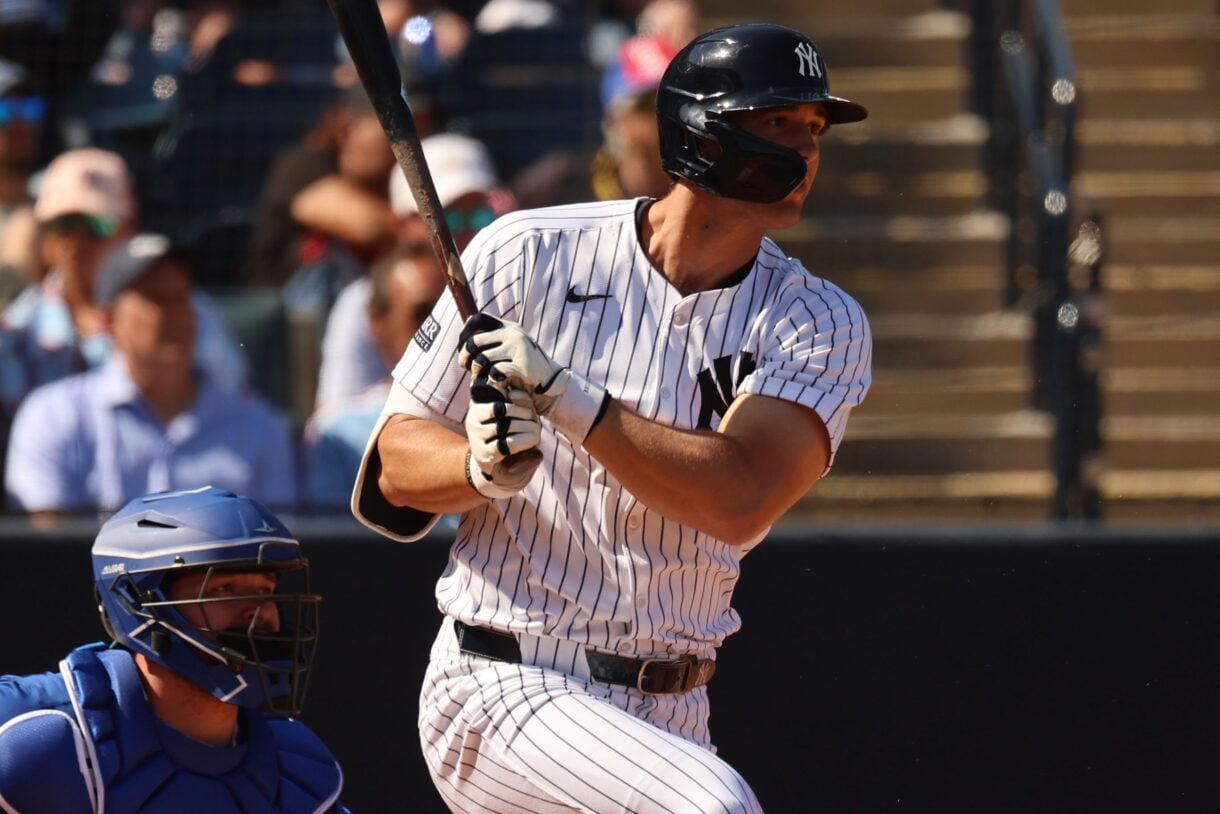
Tuesday brought a different kind of tension to the New York Yankees. There was no late-inning drama or mound visit chatter, just an organizational fork in the road that would shape the next year and beyond. With the deadline for Trent Grisham’s qualifying offer and the final chance to shield prospects from the Rule 5 Draft landing on the same day, the Yankees found themselves juggling immediate stability with long-term opportunity.
Grisham returns for 2026, giving the Yankees clarity in the outfield
There had been some quiet speculation throughout the week about what Grisham might do. He’s a player with enough offensive value and athleticism to draw interest elsewhere, but accepting the Yankees’ qualifying offer at $22.025 million means he’s betting on himself while also grabbing financial security for 2026.
For the Yankees, it provides a bit of certainty in an outfield that has been anything but predictable in recent years.

It also potentially buys time for the next wave of Yankees outfield talent, which made headlines of its own on Tuesday.
Spencer Jones and a pair of arms earn protection from the Rule 5 Draft
Behind the scenes, Tuesday was arguably more meaningful for the Yankees’ future than for their 2026 lineup. The team added outfielder Spencer Jones and right-handers Elmer Rodriguez and Chase Hampton to the 40-man roster, ensuring none of them can be grabbed in December’s Rule 5 Draft.
Jones was the biggest no-brainer. The former first-round pick turned heads with a loud breakout year split between Somerset and Scranton Wilkes-Barre. Thirty-five home runs, 29 steals, and a 153 wRC+ tell most of the story, but the context matters too. He did it while continuing to develop physically and adjusting to advanced pitching. The contact questions aren’t gone, yet he’s established himself as someone who might push his way into the Yankees’ MLB picture as soon as next year.

Rodriguez’s rise has been a steadier climb, but no less impressive. A 2.58 ERA over 150 innings across three levels is the kind of season that forces a front office to act. He struck out 176 hitters, and scouts inside and outside the organization view him as a potential mid-rotation starter sooner rather than later. He could easily find himself summoned to the Bronx.
Hampton is the wild card. He didn’t pitch this year after undergoing Tommy John surgery, but the Yankees weren’t about to risk losing an arm this talented for nothing. They expect him to get significant innings in Double-A or Triple-A next season. If the recovery goes smoothly, there’s even an outside chance he appears in the Bronx in the second half.
Not everyone was protected, leaving difficult choices on the table
The Yankees couldn’t protect everyone, and that reality may sting over the next few weeks. Left-handers Henry Lalane and Brock Selvidge, right-hander Brendan Beck, outfielder Jace Avina, first baseman T.J. Rumfield, and reliever Eric Reyzelman all went unprotected despite ranking among the organization’s top 30 prospects.
Pitchers Harrison Cohen and Zach Messinger also remain exposed. Given the way some rebuilding teams operate in the Rule 5 market, it wouldn’t be surprising if one or two players from this group get selected. The Yankees are gambling that the ones they left out aren’t quite ready to stick on an MLB roster for a full season.
What Tuesday’s moves say about where the Yankees are headed
Taken together, these decisions show a Yankees organization trying to balance the urgency of returning to contention with the patience needed to grow its next young core. Grisham’s return shores up the present. Protecting Jones, Rodriguez, and Hampton fortifies the future.
The question now is how these choices influence the rest of the offseason. Will the Yankees lean into youth, or will these moves simply give them more pieces to work with as they explore trades and free agency?
The answers will come soon enough, but Tuesday felt like the kind of day that nudges a franchise in a clear direction.
